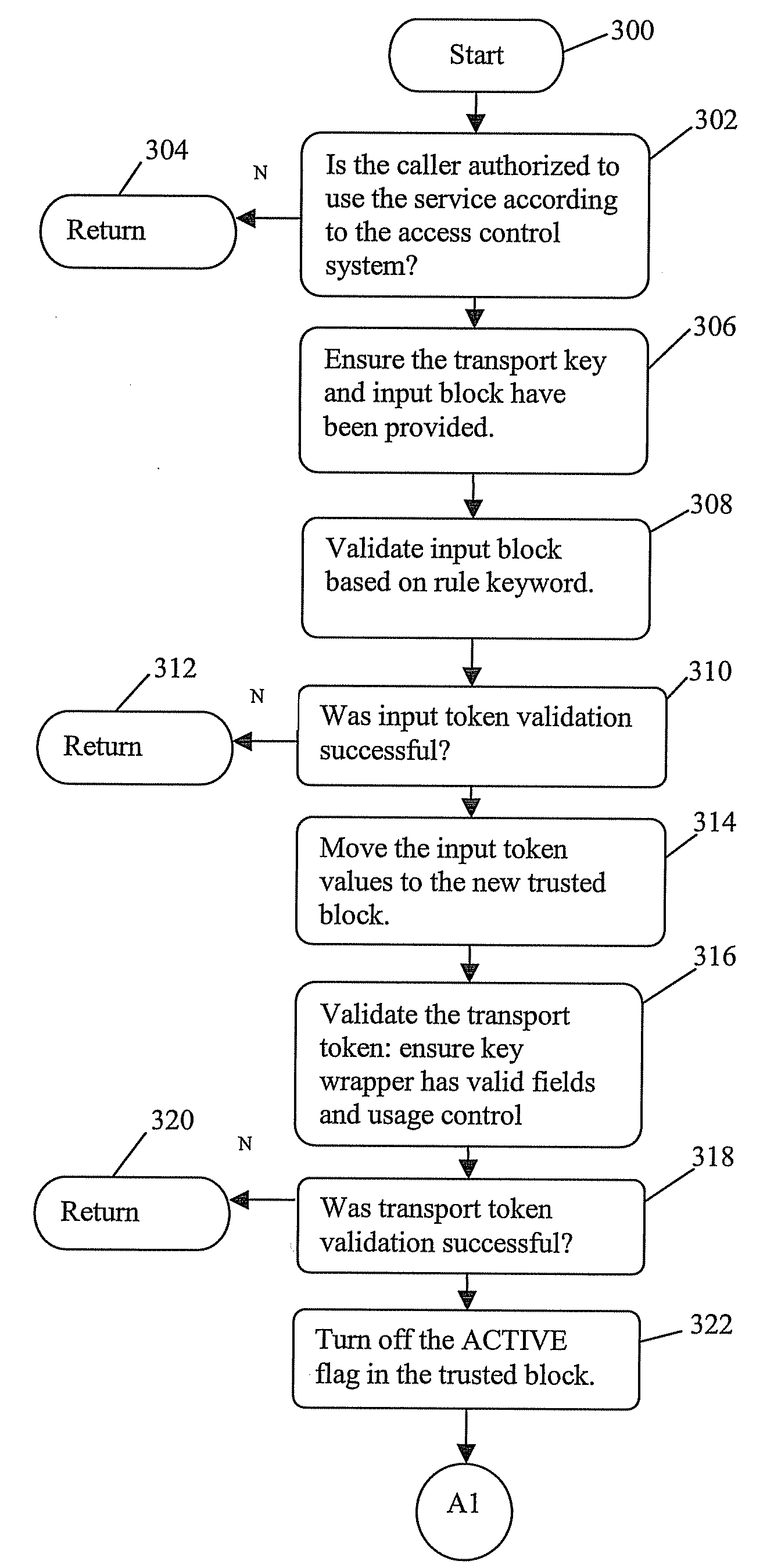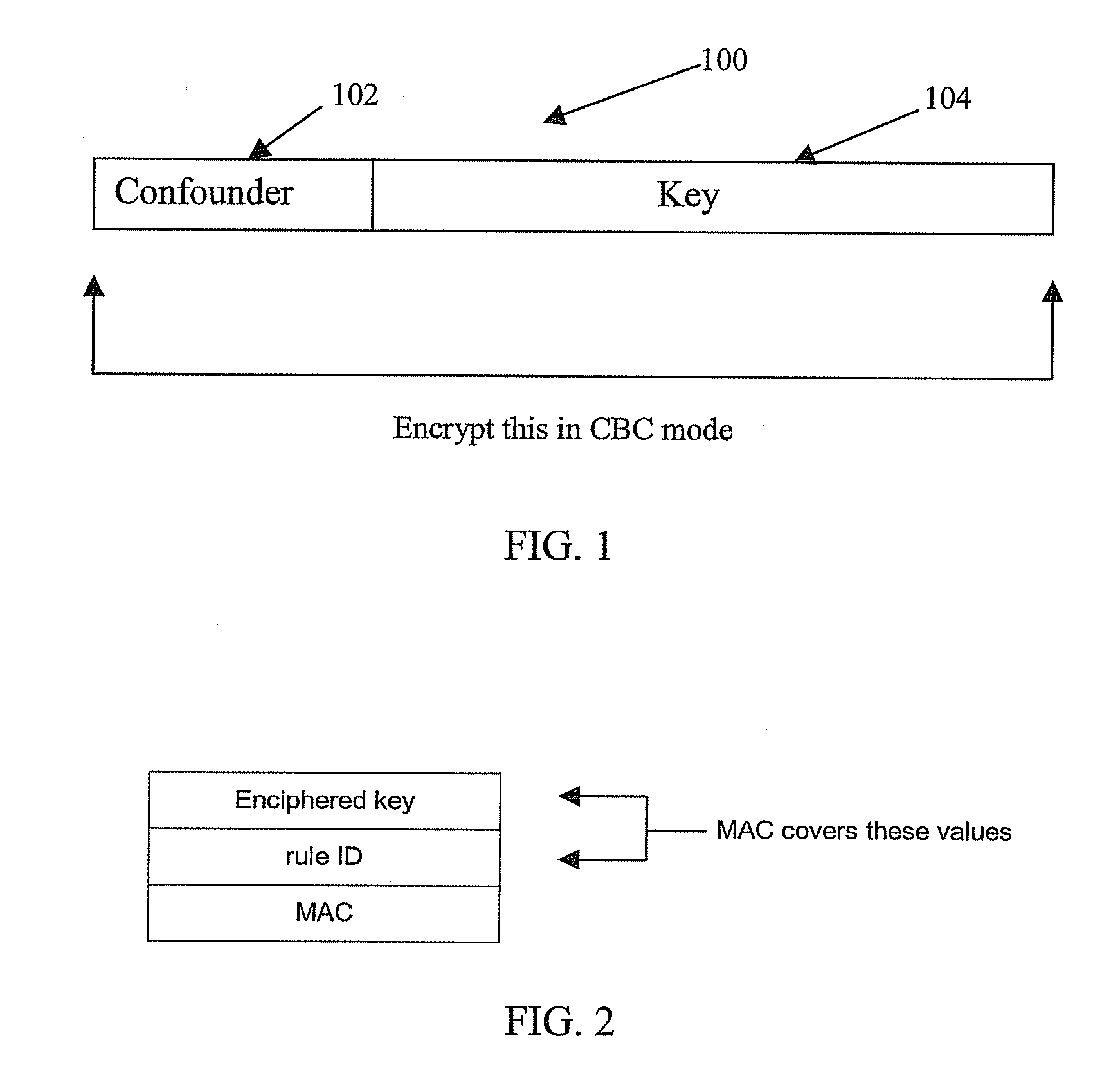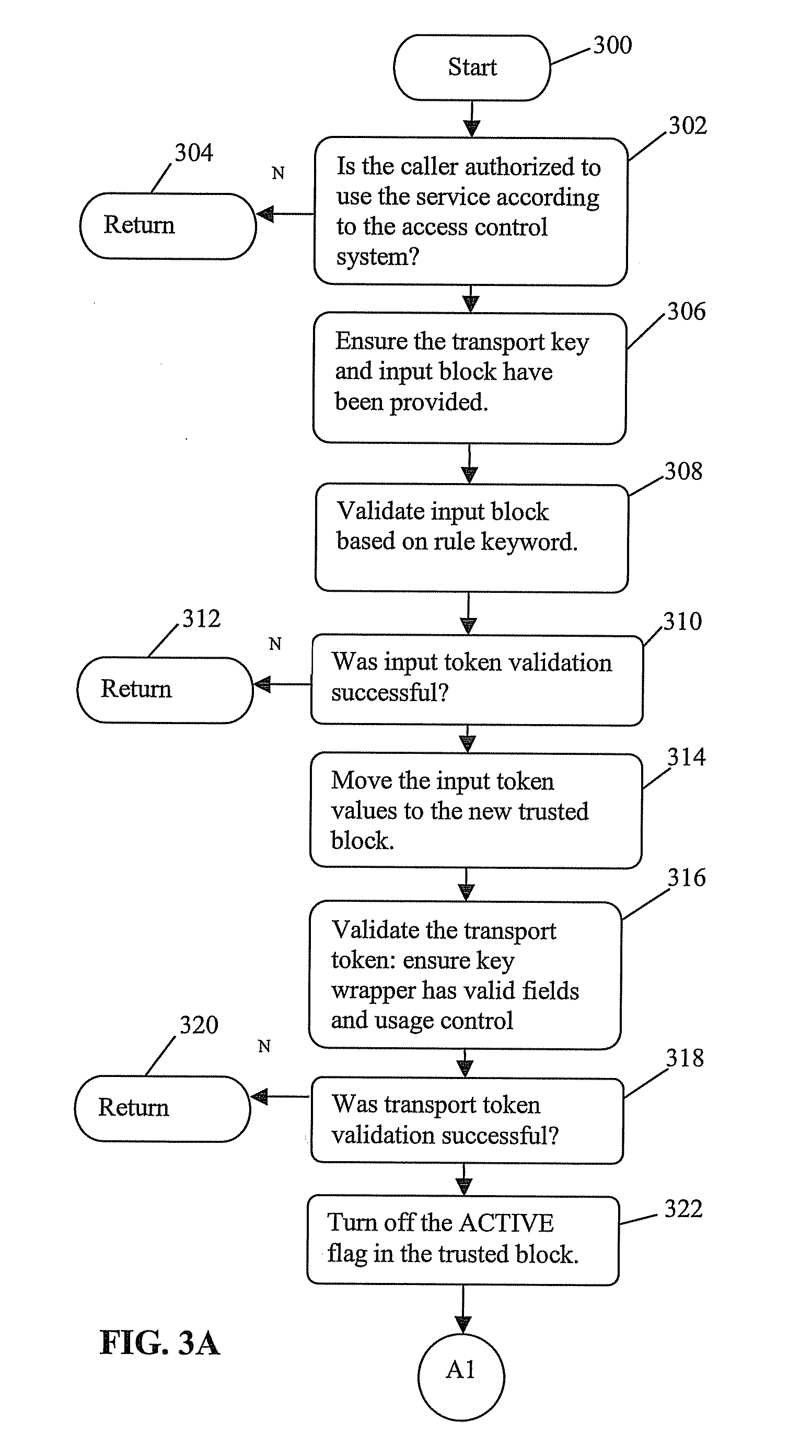Method for controlling security function execution with a flexible, entendable, and non-forgable block
a security function and block technology, applied in the field of security function execution control with a flexible, entendable, and non-forgable block, can solve the problems of difficult process of getting the first key securely loaded in the atm, high cost for banks or service providers, and neither approach is attractive from a security perspective, so as to reduce the risk of trusted block being employed
- Summary
- Abstract
- Description
- Claims
- Application Information
AI Technical Summary
Benefits of technology
Problems solved by technology
Method used
Image
Examples
Embodiment Construction
[0099]The trusted block concept provides a great deal of flexibility and power, but at the same time it gives the security administrators the ability to tightly control what can be done with the cryptographic keys used by their applications. The new methods define new procedures for distributing and loading these keys using public key cryptographic techniques, which allow banks or other service providers to load the initial KEKs without sending anyone to the ATMs, or to exchange keys with other types of cryptographic systems. These methods will make the process quicker, more reliable, and much less expensive for the banks or other service providers. This disclosure describes a new and novel method for providing the necessary cryptographic functions to create and manage the special key forms needed for remote key distribution of this type. The invention described also provide a mechanism through which the system owner can securely control these translations, preventing the majority o...
PUM
 Login to View More
Login to View More Abstract
Description
Claims
Application Information
 Login to View More
Login to View More - R&D
- Intellectual Property
- Life Sciences
- Materials
- Tech Scout
- Unparalleled Data Quality
- Higher Quality Content
- 60% Fewer Hallucinations
Browse by: Latest US Patents, China's latest patents, Technical Efficacy Thesaurus, Application Domain, Technology Topic, Popular Technical Reports.
© 2025 PatSnap. All rights reserved.Legal|Privacy policy|Modern Slavery Act Transparency Statement|Sitemap|About US| Contact US: help@patsnap.com



